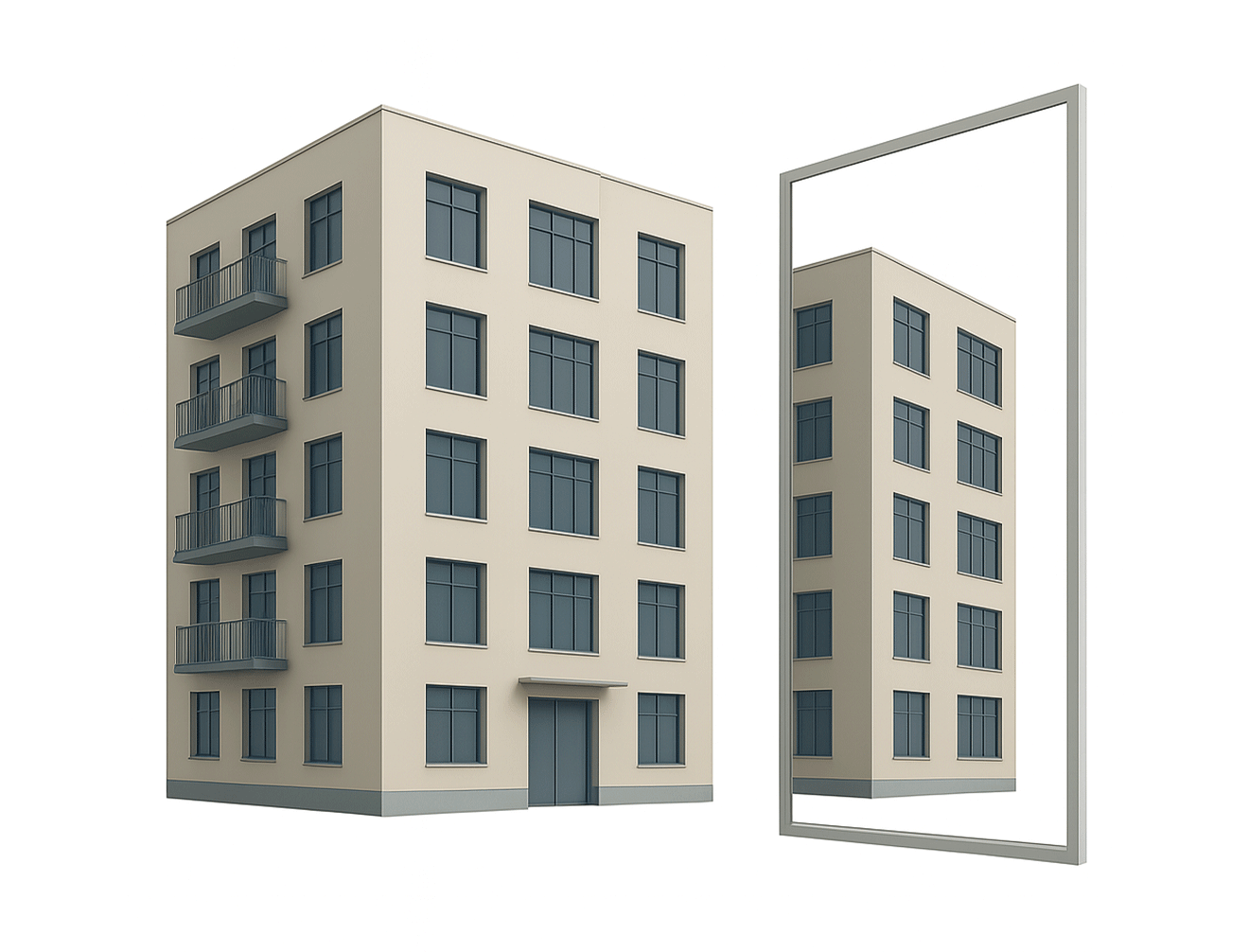
9 BIM Trends for 2025
The tech world is evolving rapidly, and with it, the BIM industry is undergoing a remarkable transformation. With projected growth of over 13,6% from 2023 to 2032*, BIM is evolving from a mere visualization tool to a comprehensive, intelligent ecosystem that revolutionizes how we conceive, design, and manage MEP systems.
Gone are the days when BIM was simply about creating 3D models. Today, it represents a dynamic convergence of advanced technologies, collaborative workflows, and data-driven insights that touch every stage of a project’s lifecycle. In this quick guide, we’ll explore the 9 BIM trends that are set to redefine MEP engineering in 2025. From artificial intelligence’s transformative potential to groundbreaking file format innovations, these trends are not just incremental improvements—they’re fundamental reimaginings of construction technology.
Key highlights that differentiate 2025 from 2024 include:
- Rising adoption of buildingSMART Data Dictionary (BSDD)
- The emerging transition from Industry Foundation Classes (IFC) to Universal Scene Description (USD)
Whether you’re a veteran BIM professional or an emerging talent in the field, this text will provide you with insights to navigate and leverage the fast evolving technological landscape.
Prepare to journey through the future of MEP engineering—where data, design, and innovation converge.
1. BuildingSMART Data Dictionary (bSDD)
The buildingSMART Data Dictionary (bSDD) is an online platform introduced in 2021 that hosts and connects classifications, standards, and libraries—known as domains. By providing a unified, ISO 12006-3 based data model and an open API, bSDD ensures consistent, interoperable, and easily accessible building information across the AEC industry.
What it means: With bSDD, you can publish, maintain, and integrate your domains into various software tools. This creates a common language for project data, minimizing confusion and ensuring everyone references the same reliable information.
Why it matters: When project teams share a uniform data framework, they communicate more effectively, reduce errors, and streamline decision-making—leading to smoother project lifecycles and stronger outcomes.
Bottom line: As bSDD adoption grows, it lays a solid foundation for future innovations. One day, AI-driven tools could tap into this structured framework, providing automated validation, data enrichment, and smarter design optimization.
2. Is USD here to stay?
While Industry Foundation Classes (IFC) have long been central to BIM workflows, the architecture, engineering, and construction (AEC) industry is increasingly exploring Universal Scene Description (USD) as a more flexible, future-ready alternative. Originally developed by the film industry, USD’s modern approach aligns better with today’s data-driven environments and real-time collaboration needs.
Key factors influencing this shift include:
- Broad Industry Support: Major tech players, forming the Alliance for OpenUSD (AOUSD), are actively promoting USD as an open standard.
- Reduced Complexity and Costs: Implementing and certifying IFC support can be cumbersome, whereas USD offers a more focused and economical path.
- Contemporary Data Structure: While IFC has roots in 1980s technology, USD is built for current demands, providing advanced hierarchical data handling and non-destructive editing.
- Integration with Visualization Tools: USD’s growing adoption in visualization platforms, along with plans to incorporate its concepts into future IFC versions, signals a more interconnected future for building data.
IFC remains relevant for certain use cases, but USD’s adaptability, backing from industry leaders, and evolving support within familiar AEC tools position it as the next step in building data exchange—one that caters to both today’s and tomorrow’s project requirements.
3. Rise of digital twins
Digital twins transform buildings from static structures into intelligent, data-driven ecosystems. By creating real-time virtual replicas synced with IoT sensors, these digital models do more than visualize space—they predict, optimize, and adapt.
Key benefits:
- Anticipate maintenance needs before failures
- Optimize energy consumption
- Reduce operational downtime
- Extend building lifecycle
They turn buildings into responsive, self-aware systems that continuously learn and improve. The future of facility management is intelligent, proactive, and connected.
4. Point clouds enriched with data and information
Point clouds—3D scans of existing spaces—are evolving from static references into intelligent data sources.
- What it means: With enriched point clouds, you’re accessing embedded details like material specs, equipment info, and maintenance logs, besides just looking at geometry.
- Why it matters: This reduces the need for full-blown modeling when simple maintenance tasks arise. Instead, you rely on rich, scan-based data to plan and execute work efficiently.
- Bottom line: Point clouds with more information simplify maintenance decisions, cut rework, and maintain flexibility, making them powerful tools in your daily lives.
5. Interoperability and open BIM standards
Smooth collaboration requires breaking down data silos. Open BIM standards ensure that various software platforms “talk” seamlessly. By complying to these standards, entire project teams—from architects to facility managers—can share consistent, accurate information. This trend makes it easier to adapt, and save time as technology continues to evolve. Don’t forget: ensure your outputs are machine-readable, right down to the GUIDs, to maintain clarity and accuracy.
6. Prefabrication and modular construction
Pre-assembling building components off-site is nothing new. It was widely used in communist-era housing projects, where standardized modules were mass-produced to meet urgent housing demands.
Now, in 2025, it’s a BIM and construction industry trend:
- What it means: BIM-driven modular design lets you manufacture MEP modules in controlled environments. When they arrive on-site, they fit perfectly—no guesswork or last-minute adjustments.
- Why it matters: Prefab speeds up construction, reduces material waste, and improves quality.
- Bottom line: Whether you’re assembling entire floors, shafts, or bathroom pods, modular methods guided by BIM data save time, money, and headaches.
7. Blockchain for data security
Blockchain is revolutionizing construction by creating a solid, transparent record of project data. Besides just a security tool, it’s becoming a comprehensive system for tracking materials, verifying sustainability, and ensuring accountability.
- Creates tamper-proof digital “passports” for building components
- Tracks materials from responsible sourcing to end-of-life recycling
- Merges with IoT sensors to provide real-time performance insights
- Ensures transparent, verifiable environmental data
It helps you trace materials, improve compliance, and build with confidence—ultimately fostering a greener, more accountable construction ecosystem. Read more about it on our blog.
8. IoT integration in BIM
IoT sensors turn buildings into responsive environments that adapt to occupants and conditions.
- What it means: Live IoT data feeds into your BIM model, helping you optimize HVAC, lighting, and plumbing systems in real time.
- Why it matters: Early warnings on equipment performance, energy usage spikes, or air quality issues let you intervene before problems escalate.
- Bottom line: IoT integration makes your building smarter, healthier, and more cost-effective, all while improving tenant comfort and satisfaction.
These sets are setting the stage for digital twins to evolve beyond static models into dynamic, data-driven companions that guide ongoing improvements.
9. AI and ML for predictive design
AI and machine learning are, applying predictive analytics to improve design and construction outcomes.
- What it means: Advanced algorithms analyze historical data, project requirements, and performance metrics to suggest better design solutions.
- Why it matters: This predictive power guides you toward more efficient layouts, greener material selections, and reduced resource consumption—before you even break ground.
- Bottom line: With AI in your toolkit, you’re proactively sculpting the optimal building environment from day one.
Are you ready for 2025?
In 2025, BIM is about concrete results—faster decisions, fewer errors, and better use of materials. By using the best out of these trends, you’ll deliver smarter, more reliable BIM MEP systems that add real value, from initial concept through long-term operation.
If you need help with embracing these trends and working on BIM projects? Contact us, the sooner the better!
Author: Dennis Mulch dennis@dibs42.com
.svg)
.svg)






.png)
.svg)